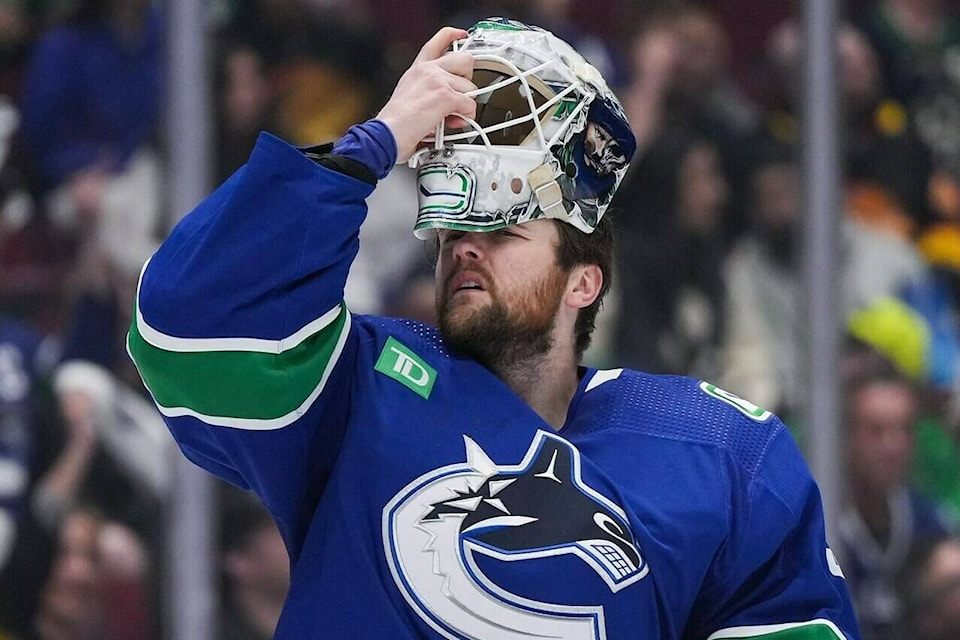Upper-body injury? Lower-body injury? Or perhaps the ultimate in vagueness: general body soreness?
Much to the chagrin of hockey fans yearning for information on NHL player injuries, teams remain steadfast in keeping such details close to the vest if they say anything at all.
“If they said we had to let out the information, I’d let it out,” said Colorado Avalanche head coach Jared Bednar. “But no one is forcing us to do it. So I’m certainly not going to give out any information that I don’t have to.”
Heightened interest with the post-season in full swing only adds to the frustration for those eager to learn about player availability.
Many Maple Leafs fans were pulling out their hair wondering why forward William Nylander missed three playoff games with an undisclosed injury. The demand for specifics was also strong on the West Coast when Canucks goalie Thatcher Demko’s injury status changed from day-to-day to week-to-week.
Increasing the annoyance level for many fans is that other major leagues — including the NBA, MLB and even the contact-heavy NFL — provide detailed injury reports.
The NHL does have collectively bargained media regulations with respect to injury reporting, but they come with flexibility.
“When an injury occurs in a Stanley Cup playoff game, a club spokesperson must notify the media of the approximate location, nature, and severity of the injury as soon as possible,” the regulations say. “Except to the extent that the club determines that such disclosure may jeopardize the player’s physical wellbeing if and when the player returns to play, in which case the club is entitled to provide a more general overview of the player’s injury status.”
Therein lies the grey area. If a team wants to keep specifics in house rather than risk an opponent targeting a player’s weak spot, then generalities are the way to go.
“Not that you’re targeting someone, but you certainly know where they might be a little bit more hesitant,” said Bruins defenceman Kevin Shattenkirk. “It’s just the game within the game at this point. It’s always kind of fun. You get a chuckle out of it.”
Maple Leafs defenceman Joel Edmundson went one step farther.
“If I know someone’s got a bad arm, I’m going to be cross-checking it,” he said. “That’s just the way I do.”
Expect the nebulous descriptions to continue for the next three rounds this spring and into the future.
“It’s a very competitive and physical game,” said Maple Leafs head coach Sheldon Keefe. “You say guys don’t target one another? Well, I’ve got news for you — they do. That’s part of the game. When you can protect the players and protect some information, why wouldn’t you?”
The legalization of sports betting across parts of North America did not change the NHL injury transparency situation, even though betting lines and prop bets are impacted by injury news.
The NHL and many of its teams have partnered with sports betting operators in recent years, but there doesn’t seem to have been a push for adjustments.
“This (league) policy long predates legalized sports betting and there has been no discussion of changing it,” Gary Meagher, the NHL’s senior executive vice-president of communications, said in an email.
Messages sent to several sports betting operators requesting comment were not returned. An NHL Players’ Association spokesperson declined to comment.
“I know that it’s been for years now where it’s upper body or lower body and that’s it, and I don’t really understand the need for the press to know more details than that,” said Oilers defenceman Mattias Ekholm. “If you can’t go, you can’t go.”
It could also be argued the Nylander buzz and the Demko talk — just two of many injury examples around the league — helped fuel interest in their teams and the game. Radio and podcast hosts had a field day with the storylines and plenty of ink was spilled.
“It’s funny because after a team (loses) in the playoffs, they’re so eager to disclose a laundry list of everything that was wrong with the guys,” said longtime hockey scribe Ken Campbell, now a freelance writer for The Hockey News. “But during the series, they’re not. I don’t blame the coaches and I don’t blame the GMs. I mean I wouldn’t give out that information if I didn’t have to.
“But I think the league has to step up here. Particularly now if you’re going to associate yourself with all of these betting establishments.”
